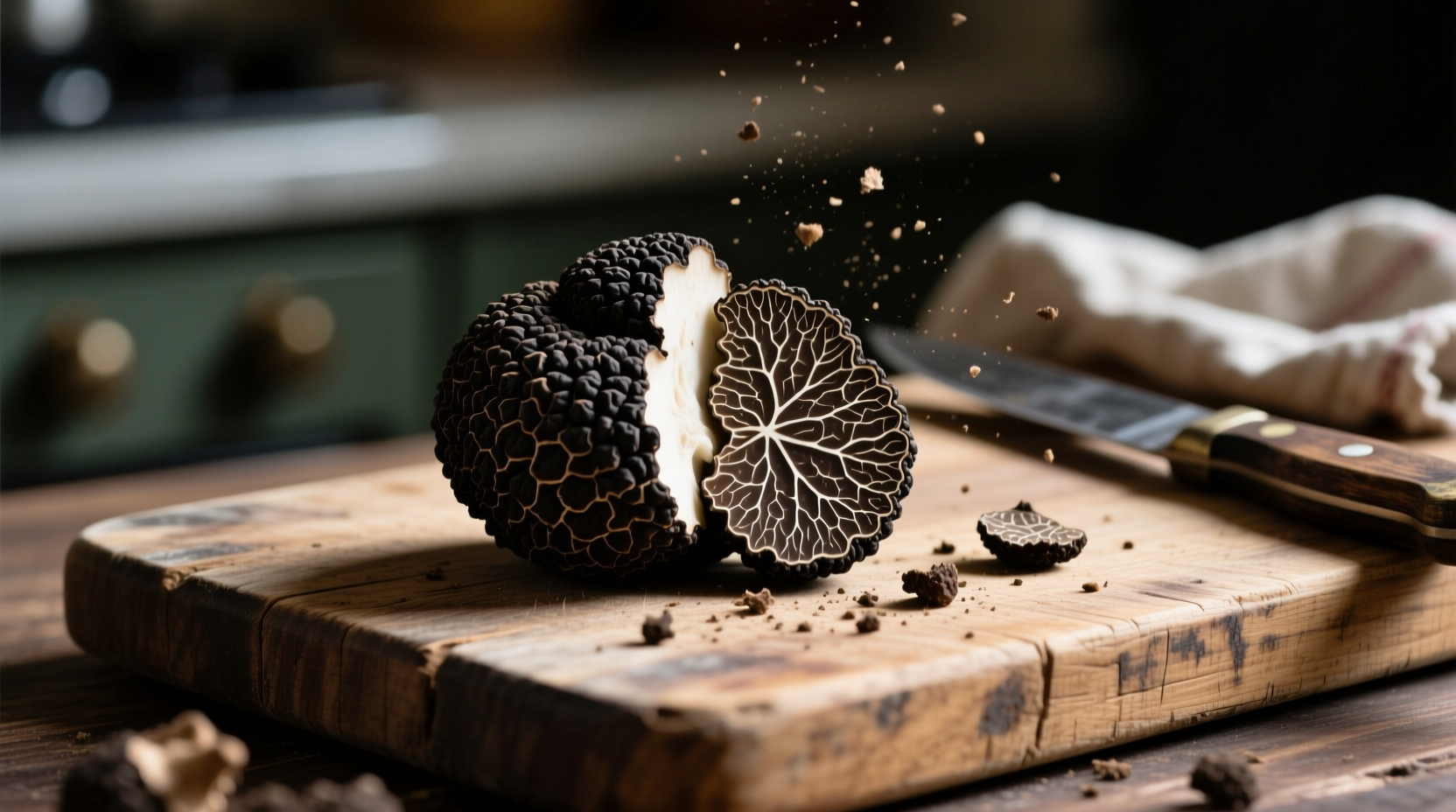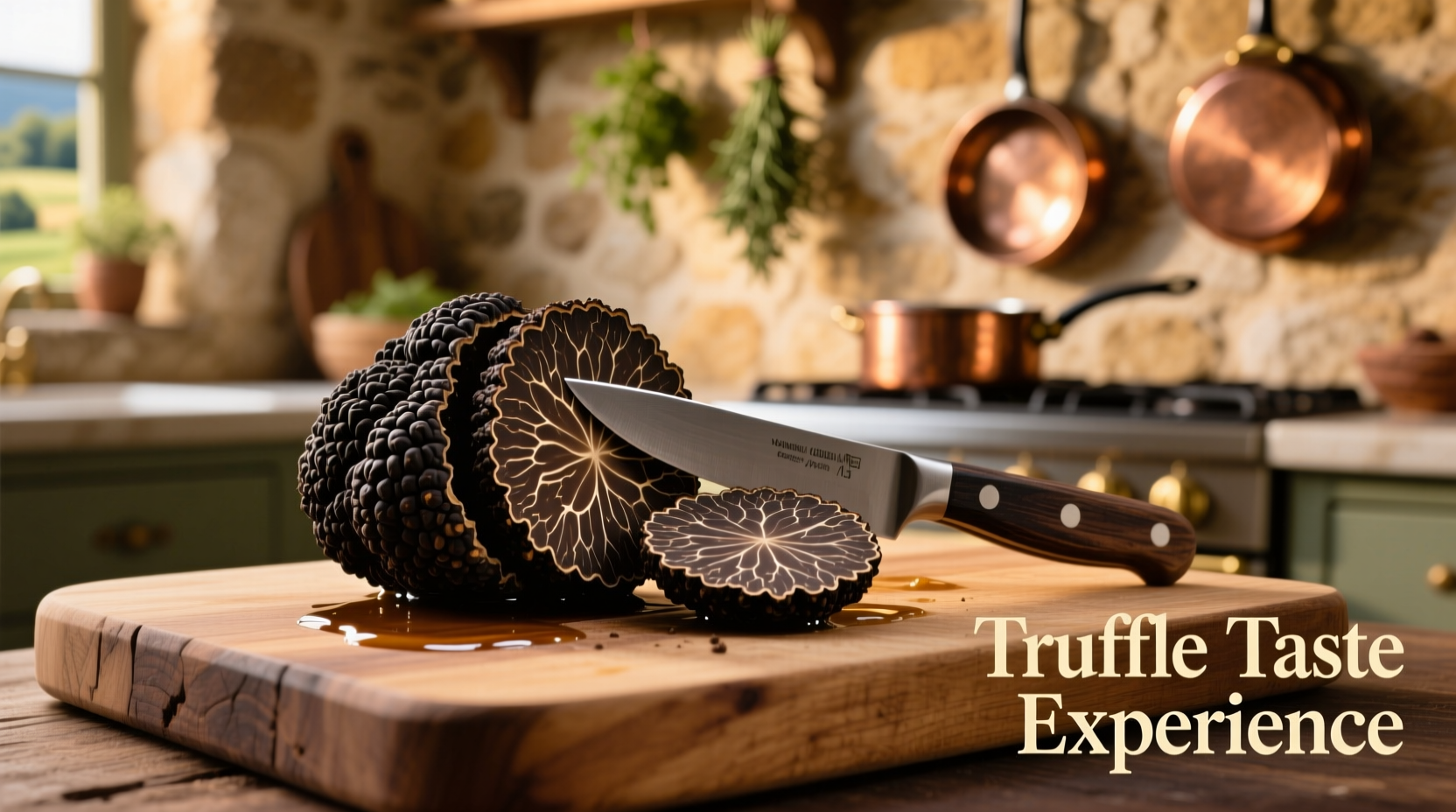The Essence of Earth: Understanding Truffle Flavor Profiles
When you bite into a dish infused with genuine truffle, you're experiencing one of nature's most complex flavor compounds. Unlike their chocolate-named cousins, culinary truffles are subterranean fungi that release a distinctive aroma profile detectable by trained pigs and dogs from meters away. The taste isn't overwhelming like strong spices, but rather a sophisticated background note that elevates everything it touches—think of it as nature's umami amplifier.
White Truffle vs Black Truffle: A Sensory Comparison
Understanding the difference between white and black truffles is essential for appreciating their unique contributions to cuisine. While both share earthy foundations, their aromatic compounds create distinctly different experiences that professional chefs leverage strategically.
| Characteristic | White Truffle (Tuber magnatum) | Black Truffle (Tuber melanosporum) |
|---|---|---|
| Primary Aroma Compounds | 2,4-dithiapentane (garlicky/sulfurous) | Bis(methylthio)methane (earthy/nutty) |
| Flavor Intensity | Powerful, immediate impact | Subtle, develops with warmth |
| Best Culinary Applications | Raw applications (shaved over finished dishes) | Cooking ingredient (sauces, stuffings) |
| Seasonality | October-January | December-March |
| Flavor Evolution | Peaks immediately, fades quickly | Deepens when heated, longer-lasting |
According to research published in the Journal of Agricultural and Food Chemistry, white truffles contain over 40 volatile compounds that contribute to their distinctive aroma, with 2,4-dithiapentane being the primary compound responsible for their signature garlicky note. This scientific understanding explains why white truffles lose their magic when cooked—their delicate aromatic compounds break down with heat, which is why culinary tradition dictates they should only be used raw.
Decoding the Truffle Experience: What to Expect
First-time truffle consumers often struggle to identify the specific flavors because truffle taste operates on multiple sensory levels:
- The Initial Aroma Hit – Before you even taste it, your nose detects earthy, musky notes that prepare your palate
- The Flavor Foundation – Earthiness reminiscent of damp forest soil after rain, sometimes with mineral undertones
- The Secondary Notes – Depending on variety: garlic (white), nuts (black winter), chocolate (black summer), or cheese (some black truffles)
- The Mouthfeel Component – Not a taste per se, but the way truffle oil or shavings coat your palate with a luxurious, almost fatty sensation
Professional chefs describe the experience as "umami on steroids" – it doesn't taste meaty or brothy by itself, but it magically enhances those qualities in whatever dish it accompanies. This explains why a simple pasta with butter and truffle shavings becomes exponentially more satisfying than the sum of its parts.

Common Misconceptions About Truffle Flavor
Many consumers develop unrealistic expectations about truffle taste due to widespread misinformation:
- Truffle oil doesn't equal real truffle flavor – Most commercial truffle oils use synthetic 2,4-dithiapentane that creates a one-dimensional, overpowering flavor unlike natural truffles
- Not all truffles taste the same – Summer black truffles have a more subtle, chocolatey note while winter black truffles offer deeper earthiness
- Truffles aren't supposed to dominate – Their magic is in enhancing other ingredients, not overwhelming them
The University of Turin's Department of Agricultural, Forest and Food Sciences confirms that authentic truffle aroma contains over 50 volatile compounds that interact with our olfactory receptors in complex ways—something impossible to replicate with artificial flavorings. This explains why many people who've only experienced truffle oil are disappointed when they finally taste the real thing.
Maximizing Your Truffle Experience: Practical Tips
To truly appreciate truffle flavor, follow these chef-recommended practices:
- Start simple – Try truffle shavings on plain buttered pasta or scrambled eggs to isolate the flavor
- Respect temperature – White truffles lose complexity above 30°C (86°F), so always add them after cooking
- Pair wisely – Truffles complement ingredients with their own umami qualities: eggs, cheese, mushrooms, and certain meats
- Storage matters – Keep fresh truffles with rice or eggs to transfer flavor while preserving the truffle
- Trust your nose – Fresh truffles should have a powerful, complex aroma—weak scent means diminished flavor
Remember that truffle appreciation develops with experience. Food scientists at the Institute of Food Research note that repeated exposure to complex flavors like truffles actually changes our taste receptors, allowing us to detect increasingly subtle notes over time. This explains why truffle novices might initially only notice the earthiness while experienced enthusiasts can identify specific secondary notes.
Why Truffle Flavor Commands Such High Prices
The extraordinary cost of truffles (sometimes exceeding $3,000 per pound) directly relates to their unique flavor chemistry and harvesting challenges:
- Truffles produce complex aromatic compounds only when perfectly ripe, which occurs unpredictably underground
- Their flavor compounds are volatile and degrade rapidly after harvesting
- Cultivation remains challenging—even farmed truffles often lack the complexity of wild counterparts
- Seasonality limits availability to just a few months per variety
Unlike most flavorings that can be standardized and mass-produced, each truffle delivers a unique aromatic profile influenced by soil composition, tree symbiosis, and microclimate—making every bite a one-of-a-kind sensory experience that cannot be replicated at scale.
Frequently Asked Questions About Truffle Taste
Do truffles taste like chocolate truffles?
No, culinary truffles (the fungi) share no relation to chocolate truffles. While black truffles may have subtle chocolate-like notes, they primarily taste earthy and musky, completely different from sweet chocolate confections.
Why can't I taste anything when I try truffle products?
Many commercial truffle products use synthetic flavorings that lack the complexity of real truffles. Genuine truffle flavor is subtle—start with fresh shavings on simple dishes like eggs or pasta to properly detect the nuanced earthy, garlicky notes.
Do all truffles taste the same?
No, different truffle varieties have distinct flavor profiles. White truffles offer bold garlicky notes, black winter truffles provide deep earthiness, and summer black truffles have more subtle chocolate undertones. Soil composition and ripeness further influence each truffle's unique flavor.
How long does truffle flavor last in dishes?
White truffle aroma begins fading immediately when exposed to air and heat, lasting just 15-20 minutes in warm dishes. Black truffle flavor is more stable and can enhance dishes for several hours, with flavors deepening when cooked properly into sauces or stuffings.











 浙公网安备
33010002000092号
浙公网安备
33010002000092号 浙B2-20120091-4
浙B2-20120091-4